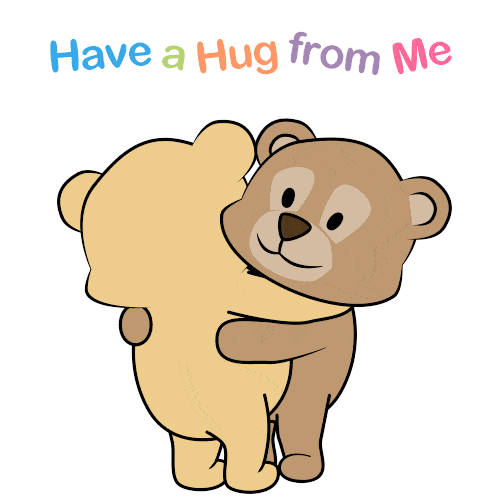Culture and Touch
The Language of Touch: Cultural Variations & Western Backwardness
Culture and Touch
Touch is the most fundamental and essential form of communication. It goes beyond verbal and visual cues and conveys emotions and intentions in the most direct way. However, the norms and customs around touch vary greatly between different cultures, and these variations can teach us a lot about the values within society and interpersonal relationships.
Cultural variations in touch
Culture and Touch
In many cultures, touch is an integral part of everyday life. For example, in high-contact cultures such as those in the Middle East, Latin America, and Southern Europe, touch is a common language of warmth and connection. People stand closer, make more eye contact, and often include touch in their interactions. A handshake can turn into a heartfelt embrace, and greetings are often accompanied by kisses on the cheeks.
Conversely, low-contact cultures, including parts of the Far East, maintain greater physical distance in social interactions. In these cultures, touch is less frequent, and verbal communication is relied upon more. The head, which is considered sacred in many Asian cultures, is off-limits to touch, and certain gestures, such as using the left hand to give or receive objects in the Middle East, are considered disrespectful.
Touch deprivation in the West
Culture and Touch
Although Western cultures are less focused on touch, there is growing concern about the lack of it. In the frenzy of modern life, especially in urban areas such as London, physical interactions have been reduced, leading to a phenomenon known as ‘skin hunger’. This term describes the unfulfilled desire for physical contact, a deficiency that can cause feelings of loneliness and emotional discomfort.
Research shows that touch is not just a ‘nice extra’, but a biological necessity. From the Harlow studies with monkeys to observations in human development, it turns out that touch is essential for both emotional and physical health. It contributes to well-being, strengthens relationships, and is even crucial for the healthy growth and development of the brain in babies.
De impact van het klimaat op aanraking
Culture and Touch
Interestingly, climate can influence how touch plays a role in a culture. Warm climates are often associated with more intense emotional expression and closer interpersonal connections. This could explain why people in tropical regions tend to have more physical contact than people in colder climates.
The Way Forward
Culture and Touch
As we increasingly recognize the importance of touch for our well-being, it becomes clear how essential it is to reintegrate touch into our daily lives, especially in Western societies where physical proximity is less obvious. Whether it’s by encouraging activities that promote physical contact, such as dance or sport, or by encouraging a safer and mutually desirable touch, it is vital that societies address the lack of touch that many people face.
Touch is a form of communication that says a lot about the values of a culture and the needs of its people. Cultural norms may dictate what is and isn’t acceptable when it comes to touch, but the basic human need for physical contact remains the same everywhere. As we navigate the complexities of cultural differences and the lack of touch, especially in the West, it is important to remember and appreciate the power of a simple touch, and the profound impact it can have on our collective well-being.
The Power of Touch
Culture and Touch
In this YouTube video, Jane Anderson, an experienced and versatile massage therapist, explores a big idea: Can the power of touch change the world for the better? This may seem like a simple concept, but the impact of touch on human health, well-being, and society is huge.
Touch is a basic need, just like eating and sleeping, yet it is often underestimated in our modern society. In cultures where touch is less encouraged, such as in many Western countries, a lack of physical contact can lead to problems such as stress, loneliness, and even aggression. Jane Anderson explains how touch is deeply embedded in our nervous system and why it is so important for our emotional and physical health.
Jane Anderson has an impressive background as a massage therapist, specializing in chronic pain relief and working with medically complex clients. She has established multiple massage therapy schools and developed learning programs that meet the highest national standards. Her work reaches far and deep, and she has touched the lives of all kinds of clients, from patients in their final stages of life and people recovering from surgery to athletes, children and even animals. Through her extensive experience, Jane Anderson understands better than anyone how essential touch is, and how deeply it affects the well-being of both people and animals.
In the YouTube video, Jane Anderson talks about how touch plays a central role in her daily work. She works with a wide range of clients, from people with brain injuries to dogs with physical limitations. In every situation, it becomes clear how powerful and healing touch can be. For Jane Anderson, touch never feels like work; It’s a natural way of connecting and providing support. Even in difficult situations, such as working with a client who is receiving a difficult diagnosis, touch can help to bring a sense of comfort and calm.
One important aspect that Jane Anderson discusses is how touch can be an extension of our hearts and emotions. Our hands, which we use to feel, comfort, and provide support, are perhaps our most valuable tool for human interaction. This ability to communicate through touch, without words, connects us to others on a deep level.
It’s no coincidence that in language we often refer to touch to describe experiences and feelings: we say things like “it touched me” or “it felt good.” Touch is therefore a form of non-verbal communication that helps to strengthen relationships and build trust.
Jane Anderson goes on to ask which senses we can least do without. Think about this: if you had to give up one sense, wouldn’t touch be the last? In nature, touch develops as the first sense, even in the womb, and it remains our basis for communication and survival.
Jane Anderson explains that a lack of touch can have major consequences, especially for children. She refers to the situation of orphans in Romania, who received hardly any contact and attention due to a shortage of caregivers. These children often developed mental health problems and were also left behind physically. This impact of touch, or lack of it, doesn’t just apply to children, but applies to everyone. Touch provides us with a sense of belonging and security that we cannot replace with other sensory experiences.
Scientific research has shown time and again that touch promotes people’s well-being. A simple touch of a few milliseconds can lower all the stress hormone cortisol and release the “happiness hormone” oxytocin. A friendly touch calms us down, improves our mood and makes us less anxious. So touch is actually a biological and social bonding agent, and throughout history it has always been that way.
Many experts, including Dr. Schaumburg of Duke University, emphasize that touch is stronger than words or other forms of communication. The social and emotional power of touch is unique.
Yet, especially in the Western world, we touch each other less and less. In many countries, people are touched less frequently during the day, and often it only happens within personal or romantic relationships. Touching strangers or acquaintances is often seen as inappropriate. But what does this lack of touch mean for our society? The less people touch each other, the more we run the risk of feeling isolated and displaced.
Jane Anderson points to research showing that people in “touch-rich” cultures tend to be happier and less aggressive. In Paris, for example, researchers observed preschoolers and found that they physically approached each other much more often than children in the United States. The Parisian children also showed less aggressive behavior. This shows that a culture that embraces touch may encourage more empathy and kindness.
Another fascinating example, Jane Anderson cites comes from the world of elite sports. A study from the University of Illinois looked at NBA players and their physical interactions, such as high-fives and pats on the back. Teams that touched each other more often performed better and worked more closely together. The physical contact strengthened the team spirit and ensured better performance throughout the season. This shows that even in a competitive setting like the world of sports, touch is important for collaboration and success.
Touch even affects our buying habits and social interactions in everyday life. On average, people who are touched by wait staff tip more and feel more positive about their experience. In stores, customers buy more when they are subtly touched by an employee. Often, they don’t even remember being touched, but the positive association does linger. This shows that touch affects us unconsciously and helps us to make positive connections with others.
But why is touch so powerful? Jane Anderson explains that touch has a direct impact on our nervous system and hormone balance. A brief touch can lower our heart rate, reduce our stress levels, and instill a sense of trust and security. A simple hug or handshake releases oxytocin, which not only increases the feeling of trust, but also contributes to better health. For people with depression or anxiety, touch can be one of the simplest and most effective ways to find relief.
Massage, for example, can help regulate neurotransmitters such as serotonin and dopamine, which improves mood and strengthens the immune system.
Jane Anderson concludes the YouTube video with a thought experiment: If touch has so many positive effects, could it contribute to world peace? Perhaps. If touch can help us feel less isolated and more connected, it can also contribute to more empathy, less aggression, and a stronger society. Touch can be a simple but powerful step towards a more peaceful world.








